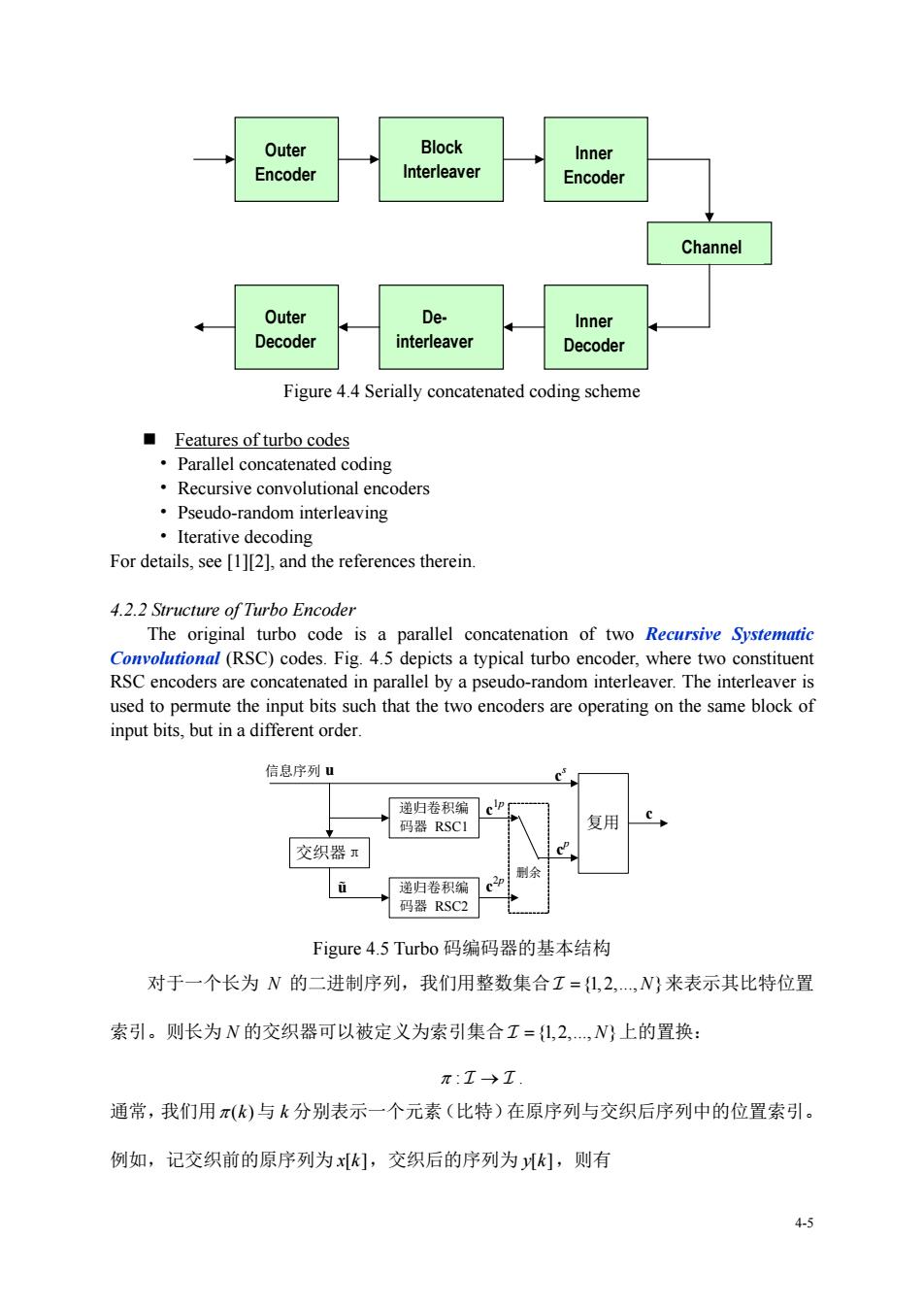正在加载图片...

Outer Block Inner Encode Interleaver Encoder Channel De- Inner coder Decoder Figure 4.4 Serially concatenated coding scheme Features of turbo codes Parallel concatenated coding Recursive convolutional encoders Pseudo-random interleaving ·Iterative decoding For details,see []and the references therein 4.2.2 Structure of Turbo Encoder The original turbo code is a parallel concatenation of two Recursive Systematie Co(RSC)codes.Fig.4.5 depicts a typical turbo encoder,where two constituent RSC encoders a udo-r ndom interleaver The inter used to permute the input bits such that the two encoders are operating on the same block of input bits,but in a different order. 信息序列口 交织器 递归卷积编 器RSC2 Figure4.5 Turbo码编码器的基本结构 对于一个长为N的二进制序列,我们用整数集合I=1,2,N来表示其比特位置 索引。则长为N的交织器可以被定义为索引集合T=1,2,N上的置换: π:I→I. 通常,我们用π()与k分别表示一个元素(比特)在原序列与交织后序列中的位置索引。 例如,记交织前的原序列为x个,交织后的序列为个,则有 4.5 4-5 Figure 4.4 Serially concatenated coding scheme Features of turbo codes • Parallel concatenated coding • Recursive convolutional encoders • Pseudo-random interleaving • Iterative decoding For details, see [1][2], and the references therein. 4.2.2 Structure of Turbo Encoder The original turbo code is a parallel concatenation of two Recursive Systematic Convolutional (RSC) codes. Fig. 4.5 depicts a typical turbo encoder, where two constituent RSC encoders are concatenated in parallel by a pseudo-random interleaver. The interleaver is used to permute the input bits such that the two encoders are operating on the same block of input bits, but in a different order. 交织器π 递归卷积编 码器 RSC1 复用 递归卷积编 码器 RSC2 信息序列 c 1p c 2p c c s 删余 u c p u Figure 4.5 Turbo 码编码器的基本结构 对于一个长为 N 的二进制序列,我们用整数集合 {1,2,., } N 来表示其比特位置 索引。则长为 N 的交织器可以被定义为索引集合 {1,2,., } N 上的置换: : . 通常,我们用 ( ) k 与 k 分别表示一个元素(比特)在原序列与交织后序列中的位置索引。 例如,记交织前的原序列为 x[ ] k ,交织后的序列为 y[ ] k ,则有 Outer Encoder Block Interleaver Inner Encoder Outer Decoder Deinterleaver Inner Decoder Channel